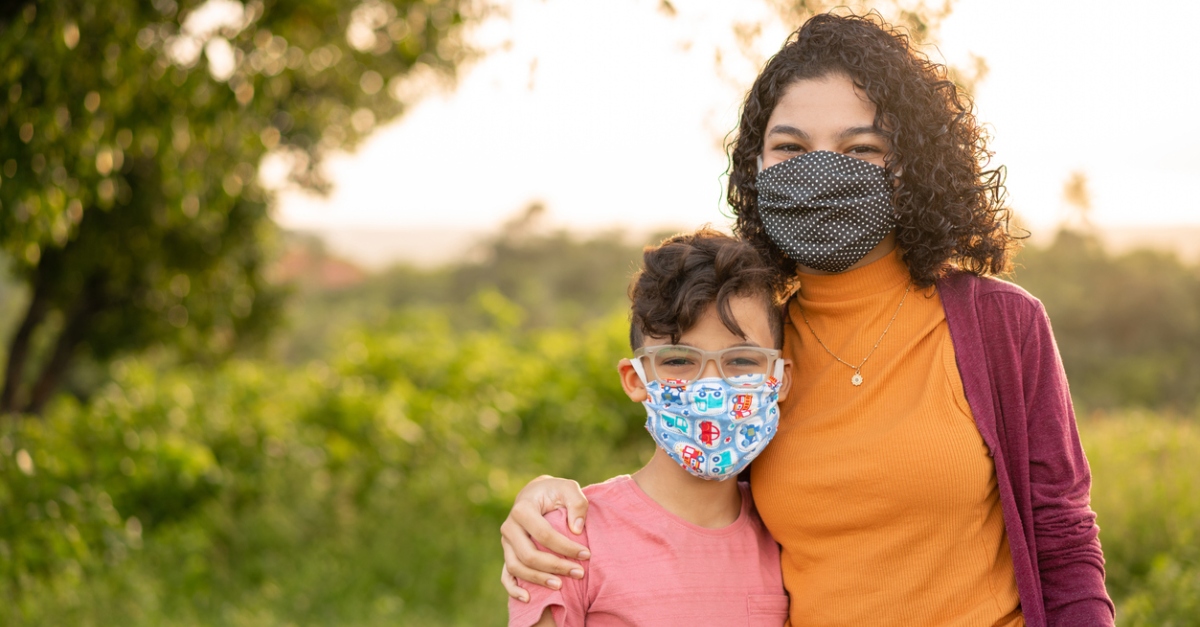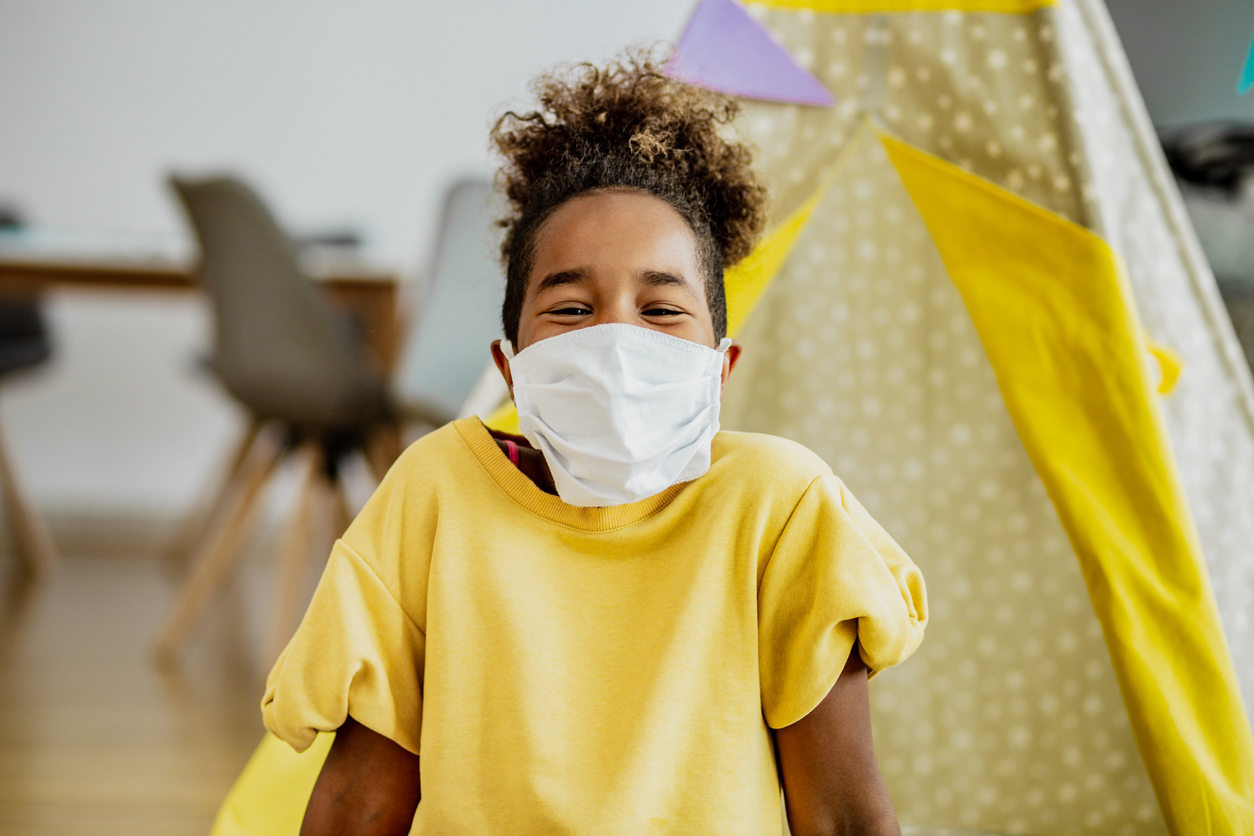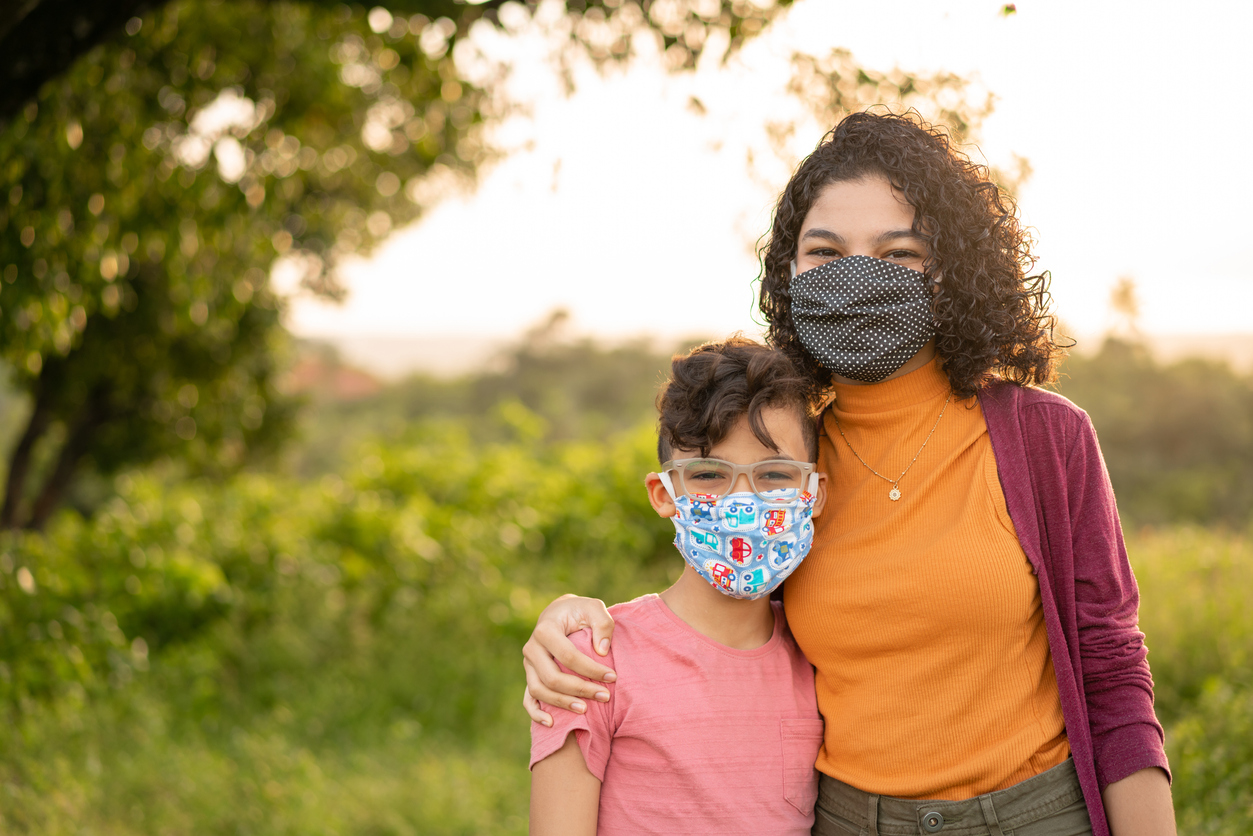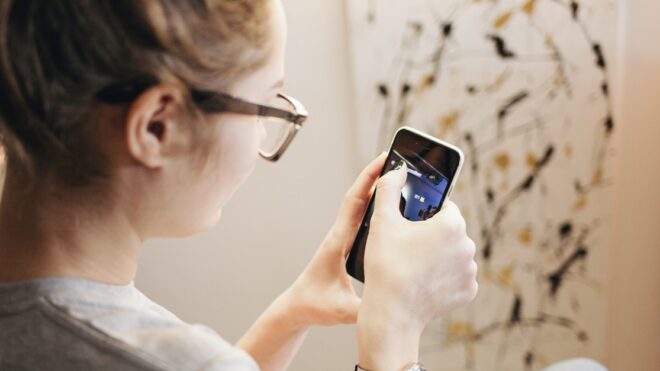
Back-to-school gear looks a little different this year. New sneakers, backpacks, and pencil boxes are laid out with hand sanitizer and face masks. The way the United States has handled the pandemic has been varied, if I am being kind with my word choice. The inconsistencies in each state have led to a prolonged attempt to contain a deadly virus, yet the calendar tells us it is a new school year, and the learning must go on. For the kids going back to the classroom for in-person learning, mask wearing ranges from mandatory to optional. The Centers for Disease Control and Prevention recommends children 2 years old and up wear cloth face masks because it reduces the spread of COVID-19, especially when social distancing is difficult to maintain. Many parents, myself included, have been skeptical about their children's willingness to put on a mask and keep it on. Thankfully, our kids are more resilient than we give them credit for. If you are worried about getting your kids to wear a mask this school year, here are some ways to ease their anxiety — and yours.
Explain the importance of their role.
Kids want to know the "why" to many topics, and mask wearing is no different. In very simple and age-appropriate ways, explain why masks are necessary. The virus is spread through person-to-person respiratory droplets, which means talking, shouting, coughing, sneezing, and singing pose a risk. A mask creates a safety barrier between someone who may be carrying the virus and those who may be incredibly susceptible to getting sick. We don't want to scare kids, but it's important to explain to kids that we wear a mask to keep others safe.
Ashley, mom of three young boys, says, "Early on we had a conversation about how wearing a mask helps to protect them but also other people around them from COVID-19. We talked about how it shows others that we care about them when we wear a mask. Wearing a mask, giving people extra space, and keeping our hands to ourselves are acts of kindness."
Liza Suarez, assistant professor of clinical psychiatry at the University of Illinois at Chicago, agrees: "You can't really go wrong if you teach your child that we're all part of this world, and we need to help each other out."
Give them choices.
Just like when it comes to clothing or shoes, we want our kids to be excited about getting dressed for the day — OK, maybe not excited, but at least agreeable to putting on pants. Many parents have found success in getting their kids to wear a mask when they have been able to pick out the style or pattern.
Britta, mom of three, says, "I tried to give them a bit of control back. We tried lots of different styles so they could pick the most comfortable. And instead of doing ear loops, we made masks with longer elastic that goes around the back of their heads. Then I took them to the fabric store and let them choose their own fabrics. When they had input on style and comfort, it changed the narrative from something they were being forced to do and now is something they actually sort of like."
My kids like to be given choices, too, and we now have a colorful mix of patterns and characters. Because I have multiple kids, this helps me keep track of which mask belongs to who so I know what is dirty and who I need to nag to return their mask back to the "mask spot" when they are done using it.
Practice and play.
When the pandemic started, my kids wanted to play with their masks. I made the mistake of not letting them do this at first, because I wanted them to take it seriously and not make a game out of it. Then I realized they needed to make a game out of it in order to make it less scary. My kids will put masks on their stuffed animals or wear them while playing "doctor" or "secret agent" as a way to normalize this new element of their lives. Some parents have their kids wear them while watching TV, on short walks, or at the park. Taking this new normal in short chunks of time gives kids the confidence to know they can do it. This can be especially important for children with sensory or non-neurotypical challenges, but they are also the ones who are showing their adaptability like champs.

Katie, mom of two, says, "[My 4-year-old is] autistic and he hated it. For him, it was practice, practice, practice right at home. It took a few times for him to tolerate it, but now he keeps it on without a fight. We have to help him put it on and take it off."
Lauren, mom of two — one who is an adult child with autism — says, "T.J. and I practiced at home before he went back to work, increasing the duration bit by bit each day so he was ready to wear his mask for his four-hour shift. It worked really well, and he felt empowered to do his part!"
Make it nonnegotiable.

At the end of the day, many parents won't let their kids leave the house without a mask. If a child wants to enjoy certain activities or the benefits of socializing, then they need to put their practice to use and put on their favorite masks.
David, father of one, tells his daughter that if she wants to play in the front yard, then she needs to wear a mask without exception. Elly, mom of two, says her kids can't leave the yard without a mask, but when it came down to riding bikes or not, they put on their masks and peddled away. Shannon, mom of two, got her kids to wear a mask when they realized they couldn't otherwise do things they loved, like peach picking or camping.
Holly, mom of five, says, "We are intentionally treating [masks] like pants, which sounds odd, I know. What type is comfortable for you? I have one kid who will NOT wear the fabric ones so we have a box of the Mickey Mouse doctor's office ones, just like I have a kid that will NOT wear button pants, so she has pull-on pants. I will help ya figure it out, kiddo, because we have to wear pants and masks."
We can and should empower our kids to be kind, empathetic, and effective mask wearers. It just takes some thoughtful styles, patience, and tough love.







